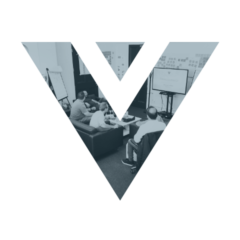What is Artificial Intelligence?
A comprehensive definition of AI is indispensable for the development and deployment of AI systems that meet the ever changing dynamics of today’s society. This short article attempts to develop such a definition.
Jhon MacCarthy, one of the founding fathers of the Artificial Intelligence (AI) discipline, defined AI in 1955 as
“[…] the science and engineering of making intelligent machines, especially intelligent computer programs […]” [1]
where
“intelligence is the computational part of the ability to achieve goals in the world” [1].
MacCarthy further provided an alternative definition or interpretation of AI as
“[…] making a machine behave in ways that would be called intelligent if a human were so behaving […]” [1].
Over the years, and especially within the business world, the definition or interpretation of the term AI has evolved or has been altered to incorporate development and progress made within the discipline. For example, Accenture in its Boost Your AIQ report defines AI as
“[…] a constellation of technologies that extend human capabilities by sensing, comprehending, acting and learning – allowing people to do much more” [2].
Likewise, PWC’s “Bot.Me: A Revolutionary Partnership” Consumer Intelligence Series report defines AI as
“[…] technologies emerging today that can understand, learn, and then act based on that information” [3].
Other definitions exist: For example, the Oxford dictionary defines AI as
“[…] the theory and development of computer systems able to perform tasks normally requiring human intelligence such as visual perception, speech recognition, decision making, and translation between languages” [4].
A common theme from these definitions is the emphasis on “human-like” characteristics and behaviours requiring a certain degree of autonomy such as learning, understanding, sensing, and acting. They, however, do not provide a framework to underpin such behaviours. This is problematic because humans, whose behaviour AI systems or agents are supposed to mimic or in certain cases act on behalf of, behave according to a number of principles and standards such as social norms. Social norms can be argued to provide a framework to navigate among all the behaviours that are possible in any given situation. They introduce the notion of acceptable behaviour, because they determine the behaviours that “others (as a group, as a community, as a society …) think are the correct ones for one reason or another” [5]. As a result, socially accepted behaviour is central to how we act in a given context. This suggests that the definitions of AI presented above are somewhat incomplete, because the AI agent or system has no way of determining which behaviour is acceptable among those that are possible without such an equivalent framework.
While fictional, Asimov’s three laws of robotics probably represent one of the first attempts to provide artificially intelligent systems or agents with such a framework. Attempts to create new guidelines for robots’ behaviours generally follow similar principles [6]. However, numerous arguments suggest that Asimov’s law are inadequate. This can be attributed to the complexity involved in the translation of explicitly formulated robot guidelines into a format the robots understand. In addition, explicitly formulated principles, while allowing the development of safe and compliant AI agents, may be perceived as unacceptable depending on the environment in which they operate. Consequently, a comprehensive definition of AI must also provide a flexible framework that allows AI agents or systems to operate within the accepted boundaries of the community, group, or society in which they operate. By doing this, activities of AI agents or systems designed under such a framework naturally allow other stakeholders to regulate their activities, too. As a consequence, we choose to adopt a new, extended definition: By AI, we understand any system (such as software and/or hardware) that, given an objective and some context in the form of data, performs a range of operations to provide the best course of action(s) to achieve that objective, while simultaneously maintaining certain human/business values and principles.
References
[1] http://www-formal.stanford.edu/jmc/whatisai/node1.html
[2] https://www.accenture.com/t20170614T050454__w__/us-en/_acnmedia/Accenture/next-gen-5/event-g20-yea-summit/pdfs/Accenture-Boost-Your-AIQ.pdf
[3] https://www.pwc.in/assets/pdfs/consulting/digital-enablement-advisory1/pwc-botme-booklet.pdf
[4] https://www.lexico.com/definition/artificial_intelligence
[5] Lahlou, S. (2018). Installation Theory. In Installation Theory: The Societal Construction and Regulation of Behaviour (p. 93 -174). Cambridge: Cambridge University Press.
[6] https://epsrc.ukri.org/research/ourportfolio/themes/engineering/activities/principlesofrobotics/


